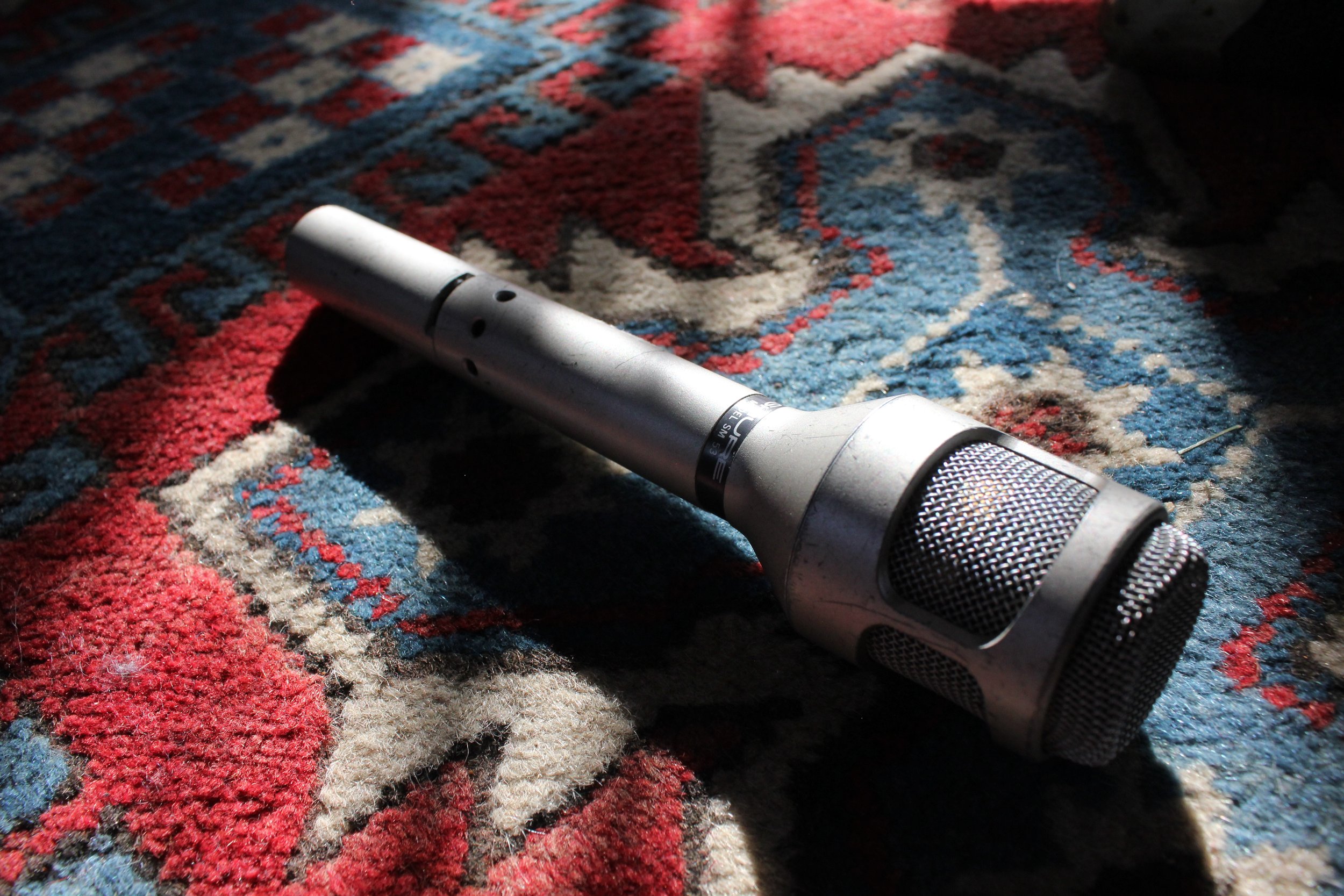Shure SM53
A fundamental principal of acoustical behaviour is that the volume and perceived frequency content of a sound is influenced by the distance between the source and the point of perception. When near to the source, a listener will hear a sound’s full low-frequencies and an articulate high end. But as distance increases, low-frequency content will fall off dramatically, with a corresponding thinning of the overall sound. Because microphones serve as the point of perception in an audio signal chain, this phenomenon influences how microphones are used.
Normal directional microphones (cardioid, supercardioid and hypercardioid) increase bottom-end frequency reproduction the closer they are placed to a sound source. This is known as the proximity effect.
Built between 1969 and 1981 the SM53 and SM54 were Shure's sole entry in the field of reduced proximity-effect dynamic microphones - microphones designed to be placed close to a sound source but without the low frequency boosting caused but the proximity effect.
They have a few fairly unique qualities which set them apart from their much more commonly used sibling the SM57.
Much like the Electro-Voice RE series of microphones, the reduced proximity-effect in the SM53 is achieved by a second set of entry points placed at set distances from the rear side of the diaphragm which can been seen here in the photos as a series of very small holes in the middle of the microphone's body.
Since the SM53 was designed partially for hand-held applications, only one of the holes needs to remain exposed for the proximity-effect reduction to work.
This “interference duct” provides maximum damping to the diaphragm that is completely uncoloured and undistorted at 180° off-axis, the result of this is that the mic’s frequency response is the same for sounds directly in front of the mic as it is for sounds arriving from off-axis, a characteristic not usually associated cardioid dynamic mics and not something that could be said of the SM57.
This characteristic was designed to be particularly beneficial for a vocalist or radio DJ who moves around while addressing the microphone but it also has some other benefits in the recording studio.
The SM53 lacks the hyped high-mid frequencies associated with Shure's well-known SM57. This doesn’t make it a natural choice for recording snare drum, but when bleed from the hi-hat is causing problems by leaking into the snare drum mic the SM53 becomes a great choice because the leaked hi-hat sound is uncoloured and still sounds balanced. Again, not the case with an SM57.
Other than being used in situations where bleed is unavoidable, the SM53’s smooth sound means it does a great job at taming harsh guitar cabs and gets used a lot in this role in my studio.
I’ve also had good success recording trumpet and trombone with the SM53.
Until recently the SM53 could be found at fairly cheaply but prices are rising and I hope to find another one before prices become unreasonable.

